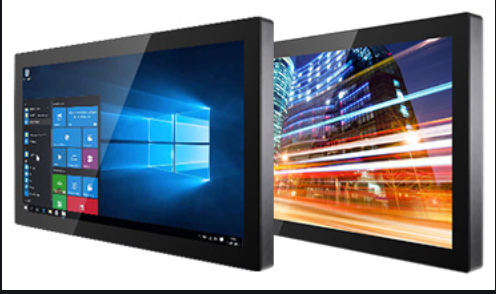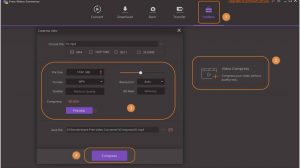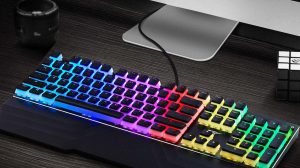Today, industries globally have adapted to modern technology. Industrial Panel PCs help widely in manufacturing and other operations in several companies. However, they are exposed to dust, vibrations, moisture, and extreme temperature. Selecting the wrong Panel PC for any job is a waste of time and money. Before selecting a panel PC for any project, it’s advisable to consider a few essential things.
Is a Fanless PC Needed?
The place where the Panel PC is being installed matters a lot. If there are dust, debris, and dirt, a fanless Panel PC is the best choice. Because it lacks openings, no dirt can slow down the manufacturing or processing operations. Even in areas where the environment is clean, a fanless Panel PC remains the top choice. It has a longer lifespan and saves the owners lots of money required to maintain and repair the fan or replace the Panel PC due to failure. The fanless Panel PC is also easy to clean because it has no vents where dirt and debris are trapped.
Type of Touch Screen
A Panel PC touchscreen is either capacitive or resistive. They vary in input detection. A capacitive touchscreen relies on human touch, and its input is similar to a smartphone. They are mostly used for interactive digital signage and kiosks. Resistive touchscreen input relies on physical pressure. Touch data can be transmitted successfully, even when wearing gloves. As such, it’s the best choice to be applied in healthcare and factory automation.
The Area It Is Mounted
A Panel PC can be mounted to a wall, fixed to a stand, or embedded within another machine. This should determine the PC you choose for your job. The key concern should be choosing the right size so that the PC fits perfectly in the area of installation. Every dimension of the Panel PC is crucial, depending on where it will be installed. When the Panel PC is mounted, it can’t collect debris easily. Again, it’s easy to clean whether the environment is tidy or dusty.
IP Rating
IP rating depends on the environment in which the Panel PC will be used. Ingress Protection determines how the PC seals out ingress from the outside. An IP has a first and second digit. The first digit represents its ability to seal out solids such as fingers and debris. Its highest IP rating is 6. The second digit represents its ability to seal out liquids. Its highest IP rating is 8. Also, there’s either an overall IP rating or a front bezel rating. If the Panel PC is too embedded in another machine, the overall IP rating isn’t necessary. However, if it’s installed as a stand-alone device, an overall IP rating is necessary.
Size of Panel PC
Panel PCs come in different sizes. Users choose the size depending on the application they’ll be used for. How they are to be mounted also determines the right PC for the job because weight is also crucial. A better resolution displays clear images, especially when the size is larger. Choosing a smaller size with a low resolution might not allow the viewer to see the images as needed. Also, there are different aspect ratio screens. It can either be wide-screen (16:9) or standard (4:3). One chooses the ratio according to the application of the Panel PC.
Use in Direct Sunlight
When a Panel PC is placed in direct sunlight, it’s almost impossible to view the screen. Most touchscreens are designed so that the sun’s light is more powerful. Sunlight readable screens can be used when the Panel PC is used in direct sunlight. They have special filters and higher light output. If the Panel PC is used outdoors, sunlight-readable screens are the best choice.
Is a Solid-State Panel PC Needed?
Choosing a fanless PC isn’t enough for its reliability. Harsh conditions require a solid-state Panel that has solid-state storage. A Panel PC using a spinning hard drive can fail due to shock and vibrations. Because a solid-state Panel PC has no parts spinning, it can withstand the industry’s vibrations, making it more durable. Despite this, it’s affordable and has multiple terabytes. Solid-state storage is the best if the Panel PC will be used in an area with excessive vibrations, and depending on the place it will be mounted.
Selecting the Right Operating System for a Panel PC
The operating systems are categorized depending on the type of computer being controlled and the application supported. They include real-time OS, single user-single task OS, single user-multitasking OS, and multi-user OS.
Real-Time OS
If operations are restricted on time, this is the best operating system for the Panel PC. It can be embedded in another system because the size of the program is small. It’s best recommended for logistics, healthcare, military, among others.
Single User-Single Task OS
It’s designed to manage a single task at a time. They are mostly applied in logistics and bar code scanning.
Single User- Multitasking OS
It enables the user to run several operations on the same computing device and is most commonly used in various industries to run their operations. They are used to correct data, transmit, and analyze.
Multi-User OS
When a multi-user OS is used, different users can operate the Panel PC resources at the same time. However, each resource is used independently to prevent causing errors to others when it fails. This type of operating system is used in enterprise data centers and the military.
Choosing the right Panel PC for a particular application is determined by several factors. These factors also depend on budget, period the Panel PC will be used, and hardware options. Selecting the right Panel PC for use ensures improved manufacturing in industries and saves lots of time and money. When an industry is large, a bigger size of a Panel PC is suitable. Users should be careful when choosing a Panel PC and should also consider where it will be mounted. The IP rating is also critical, depending on where the Panel PC will be fixed or embedded. The above guide helps different industries to make the right choice when choosing a Panel PC for their operations.







